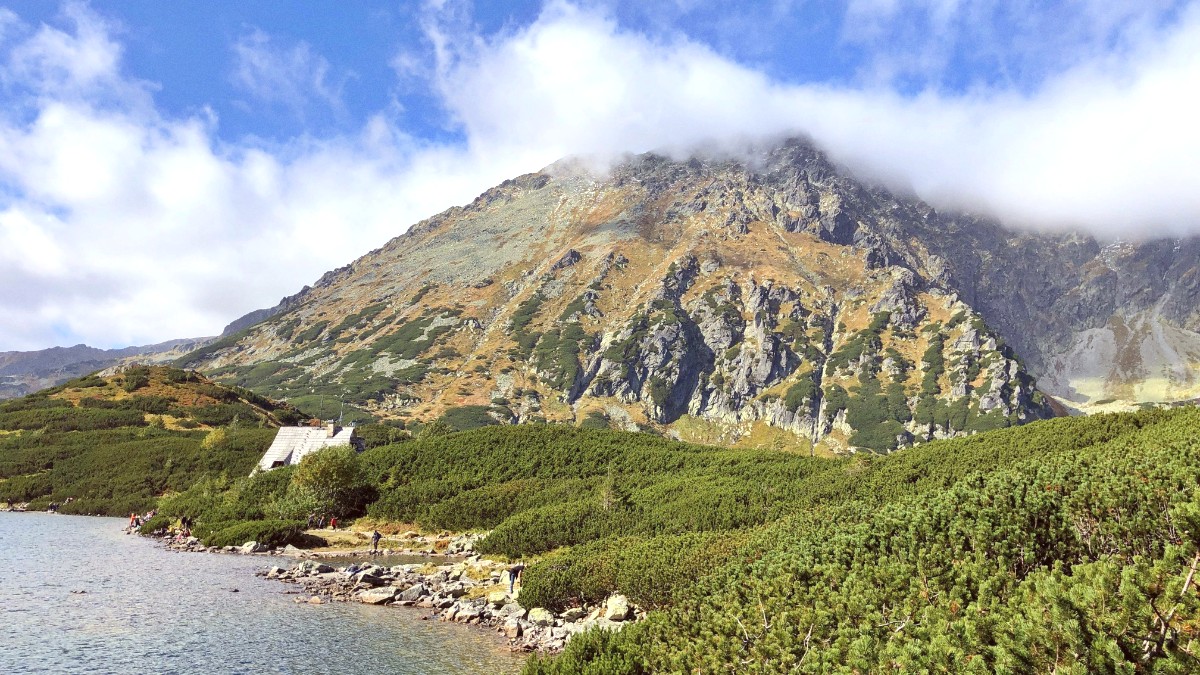
Malopolska, Poland
The town occupies a position in the historical Podhale region. The local Highlander people, known as Górale, possess a distinct dialect, traditional music, and unique wooden architecture. Their traditions are visible throughout Zakopane, enriching the visitor's experience.
The Podhale region, where Zakopane is located, is a strong cultural identity. The local Highlander people, known as Górale, possess a distinct dialect, traditional music, and unique wooden architecture.
Their traditions are visible throughout Zakopane, from ornate carvings on buildings to lively folk music performances in local restaurants. This cultural heritage enriches the visitor's experience, presenting a glimpse into a way of life deeply connected to the mountains.
Zakopane's story starts in the 17th century as a small settlement, initially dependent on metallurgical and forestry industries. Ironworks and timber harvesting shaped the early landscape and economy of the fledgling community.
This change came with the discovery of the Tatras' health-giving properties. The clean mountain air, fresh spring waters, and peaceful surroundings attracted patients seeking relief from various ailments. Dr. Tytus Chałubiński's advocacy for therapeutic benefits helped place Zakopane on the map.
A painter, architect, and art critic, he pioneered a national architectural style.
The style draws inspiration from local Highlander wooden construction.
It adapts traditional motifs, intricate carvings, and steeply pitched roofs.
Built in 1893, it is the first example of this distinct style.
Now a museum, it showcases this movement that was a statement of national identity.
Simultaneously, Zakopane became a magnet for prominent Polish intellectuals, writers, and artists. Figures like Henryk Sienkiewicz (Nobel laureate), Jan Kasprowicz, Karol Szymanowski, and Ignacy Paderewski found inspiration and refuge in the mountain setting.
Zakopane's mountainous location and undeniable natural beauty cemented its standing as a premier destination for winter sports and mountain tourism. Early pioneers recognized the potential of the Tatras, laying the groundwork for its modern reputation.
After World War II, Zakopane continued to grow as a popular resort town. Its appeal broadened to a wider audience. The communist era saw further development of tourist facilities, making the mountains accessible to more people.
Today, Zakopane thrives as a cultural and recreational hub, drawing millions of visitors each year. It carefully balances the preservation of its Highlander traditions and unique architectural heritage with the needs of a modern tourist destination.
The Tatra Mountains, a designated national park and UNESCO Biosphere Reserve, present a dramatic landscape. Unlike lower, rolling peaks of other Carpathian ranges, the Tatras showcase a true alpine character with jagged granite peaks, deep valleys, and glacial lakes.
This geological composition fosters a rich biodiversity, supporting unique flora and fauna adapted to high-altitude environments. Chamois, marmots, and occasionally brown bears inhabit these protected areas.
Home to protected species like chamois, marmots, and brown bears within the national park.
The Tatra Mountains are a designated National Park and UNESCO Biosphere Reserve.
Visitors play a role in preservation by staying on marked trails and respecting wildlife.
Zakopane's elevation influences the visitor experience. At 750 meters, the town enjoys cooler summers and abundant snow in winter. Climate zones shift rapidly as you ascend into the higher mountains.
The approximate elevation of the town itself, influencing cooler summers and snowy winters.
Iconic peak overlooking Zakopane, a popular hiking destination with a cross on its summit.
High peak accessible by cable car, offering premier skiing and hiking access.
Smoked sheep's cheese, a regional specialty often grilled and served with cranberry jam.
Traditional sour cabbage soup, hearty and warming, especially popular in winter.
A soft, salty sheep's milk cheese, frequently used in local dishes and spreads.